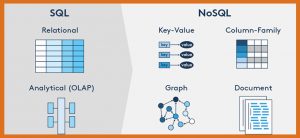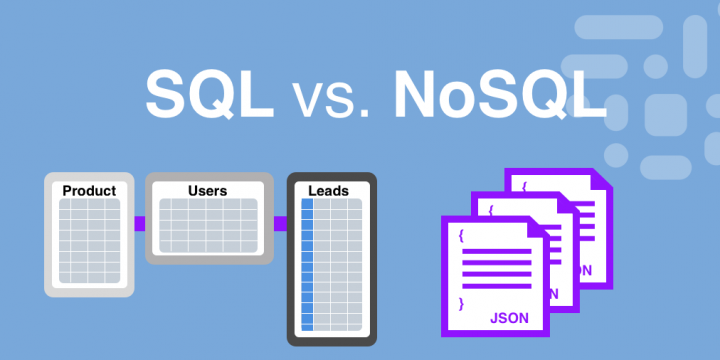Relational and non-relational databases, usually known as SQL and NoSQL, are the two basic forms of modern databases (for their query languages). When determining which database is ideal for your purposes, there are a few key differences between RBBMS vs NoSQL to be aware of.

What Do You Mean By RDBMS Database?
A relational database is a database managed by a relational database management system (RDBMS). RDBMS stores data in the form of rows and columns. Tables are also used to store relationships between tables. SQL (Structured Query Language) is a computer language that may be used to update data in a database or get data from one. Oracle, MYSQL, Microsoft SQL Server, PostgreSQL and other relational database management systems that use SQL are just a few examples.
What is NoSQL Database?
“Not Only SQL” is a frequent nickname for NoSQL. Unstructured, schema-less data can be stored in numerous collections and nodes using NoSQL, and it does not require set table schemas, limited join queries, or horizontal scaling.
One of the most notable characteristics of a NoSQL database is that no predefined schema is necessary, giving you complete freedom to store data without having to worry about schema design. These databases were created to address the flaws in traditional relational database models. MongoDB, ElasticSearch, HBase and AWS DynamoDB are just few examples of NoSQL DB platforms.
Difference Between RDBMS and NoSQL Database
- Vertical scalability is provided by RDBMS, while horizontal scalability is provided by NoSQL. As a result, servers must be added and power must be raised in RDBMS. This makes RDBMS scalability costly. In NoSQL, we simply need to add more machines, and the database does not get more expensive as a result.
- RDBMS maintenance is costly as skilled DBA is required to perform and optimize the database operations. NoSQL is mainly self-contained and performs some maintenance on its own. In NoSQL, data distribution and administration are more easy and limited.
- With the support caching in system memory, data output performance in NoSQL is better. It optimizes the cost as well, as no separate infrastructure is required. Due to the lack of support caching in RDBMS, a separate infrastructure is required and skilled professional needed to manage the load and have to place performance tweaks.
- Due to the lack of a schema and the fact that it is open-source, NoSQL data structures are never equal. As a result, the database lacks an appropriate standard. RDBMSs have a defined schema, and data must be entered in the specified format. From one table to the next, the data structure is the same.
- RDBMS uses stored procedures to help users comprehend and master data. NoSQL, on the other hand, has no stored procedures. This makes it harder for consumers to recognize patterns and retain information.
Wrapping Up
Both RDBMS and NoSQL databases excel at data management, and both are employed to keep data storage and retrieval as efficient as possible. It’s difficult to declare which technology is superior; therefore functional along with DBA and developers make consolidated decisions based on their needs and circumstances. Databases can be used to create reports and applications that assist users in finding important data on the server.
